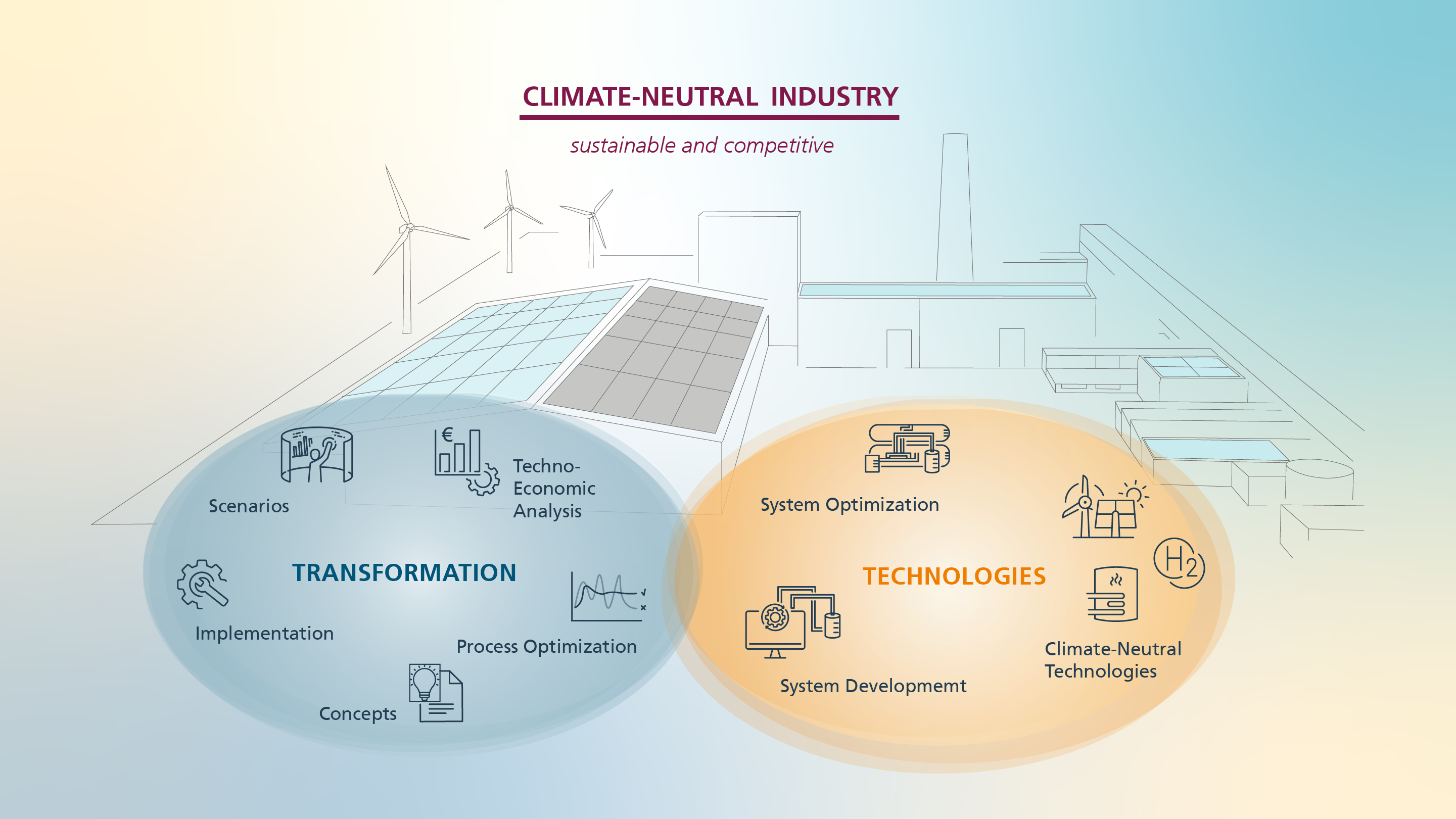Industrial production is a central part of our economy, but also a major source of greenhouse gas emissions. In view of the advancing climate change and increasing societal demands, there is a growing pressure on companies to achieve a climate-neutral production. But how can such a transformation succeed economically?
At Fraunhofer ISE, we develop innovative solutions to support the transition towards a climate-neutral industry. Our research focuses on the integration of renewable energies, the improvement of energy efficiency and the use of waste heat in industrial processes. By combining technology development, process optimization and comprehensive
